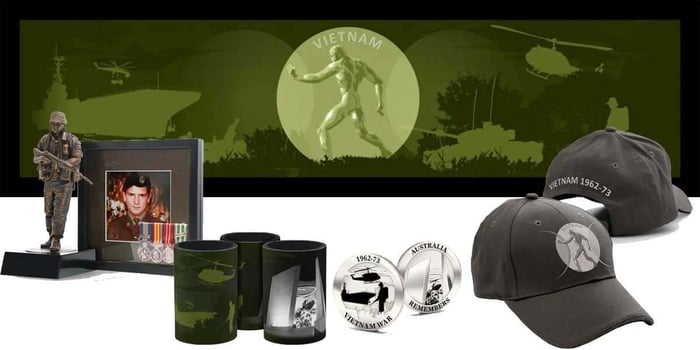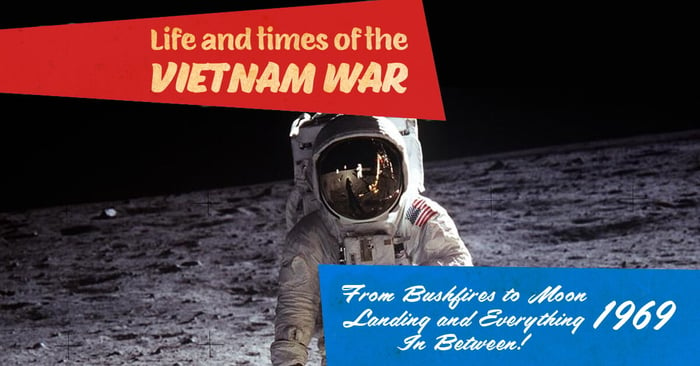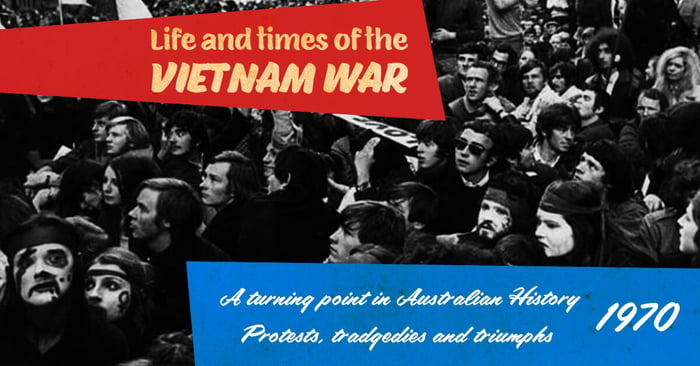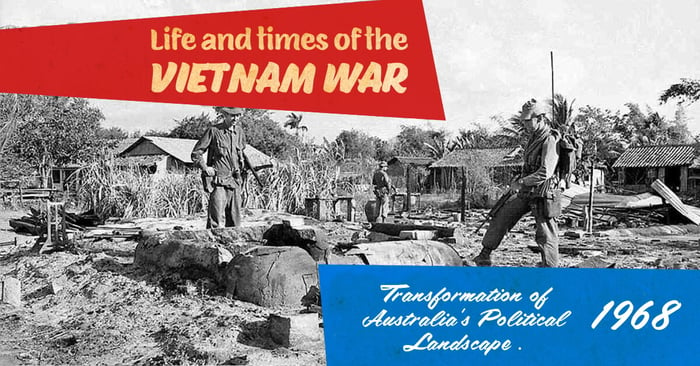
The Year of Change: How 1968 Transformed Australia's Political Landscape
The commencement of 1968 dawned with a melancholy undertone. On 17 December 1967, Australian Prime Minister Harold Holt bathed in the waters near Cheviot Beach, Victoria. Engulfed by an abrupt surge, he vanished amidst the turbulent sea and potent currents. No valiant rescue efforts could retrieve him, and he was never seen again.
A comprehensive search and rescue operation ensued, utilising air and marine resources. Innumerable volunteers and military staff participated in the endeavour. Still, despite two weeks of scouring the expansive water area around Portsea, Victoria, no traces were discovered.
Regrettably, on 04 January, the quest for Holt's remains ceased officially. Australia grieved the loss of their cherished leader. After Holt's disappearance, the Liberal Party of Australia organised a leadership contest to designate the subsequent Prime Minister. John Grey Gorton, a Victorian politician, emerged victorious on 10 January.
Life and Times
Gorton's appointment sparked controversy, with detractors asserting he lacked the requisite experience and leadership acumen to navigate Australia through the impending challenges. Undeterred, Gorton cemented his authority, implementing policies to address the nation's economic and social quandaries.
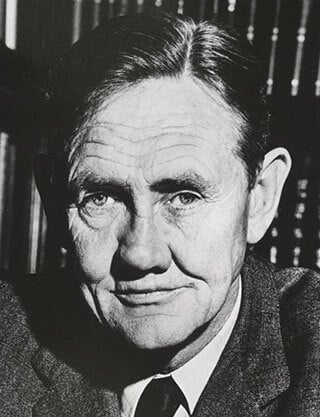
A black and white portrait of John Gorton, 19th Prime Minister of Australia, taken in January 1968
The Tet Offensive, a significant event of 1968, transpired on 29 January. Communist forces in South Vietnam orchestrated a coordinated assault on every principal city and regional hub in the nation. This manoeuvre marked a watershed moment in the Vietnam War, instilling doubt in the minds of the Australian and American populace. Consequently, the Australian government re-evaluated its dedication to the conflict in South Vietnam.
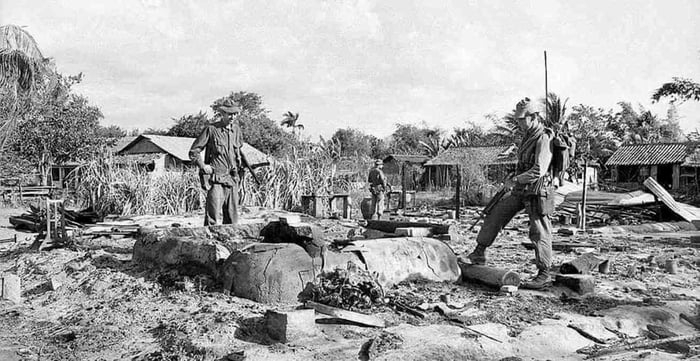 Australian troops examining the ashes and rubble in Long Dien in February 1968. (Source: Department of Veterans’ Affairs)
Australian troops examining the ashes and rubble in Long Dien in February 1968. (Source: Department of Veterans’ Affairs)
In February 1968, Prime Minister Gorton declared that Australia would not escalate its involvement in the Vietnam War. Opponents decried this stance, but Gorton remained steadfast, and his government pursued policies to diminish Australia's engagement in hostilities.
The Tet Offensive culminated in substantial losses for the Communist forces, with an estimated 45,000 to 50,000 troops perishing. Nonetheless, it served as a propaganda triumph for the Communist parties, solidifying its status as a pivotal encounter of the Vietnam War.
On 01 February, Tet enveloped Baria, the capital of Phuoc Tuy province (southeast of Ho Chi Minh City). Alpha Company of the 3rd Battalion, The Royal Australian Regiment (3RAR), and a troop of Armoured Personnel Carriers (APCs) engaged in a ferocious 24-hour skirmish to liberate the town. The brutal and intense combat between the Australian and Communist forces culminated in an Australian victory, albeit with significant losses.
On 28 May, the Battle of Balmoral signified a crucial engagement during the Vietnam War. The Australian Army's 1st Battalion, The Royal Australian Regiment (1RAR), faced two battalions of the North Vietnamese Army (NVA) and the Viet Cong (VC).

The number 6 gun of 102 Field Battery, 12th Field Regiment, Royal Australian Artillery, (RAA), on the morning after the first series of attacks on Fire Support Base (FSB) Coral by the North Vietnamese Army's (NVA) 7th Division. Standing behind the gun are the crew members. Identified from left: Gunnner (Gnr) Walker; Gnr J E Schwarze; unknown; Sergeant Max Franklin, Gun Sergeant commanding 6 gun; Gnr A Good. The crew's personal weapons are leaning against the wheel and consist of two 5.56 mm M16A1 automatic rifles, three 7.62 mm L1A1 self-loading rifles and one 9 mm F1 sub-machine gun. Photographer Greg Ayson.
The NVA initiated an assault on FSB Balmoral, which 1RAR defended. Preceded by fierce artillery fire that extensively damaged the base, the NVA launched a ground incursion. The Australian defenders countered with heavy firepower, repelling the attack and inflicting severe casualties on the NVA. The Australians sustained one fatality and 11 injuries. This battle bore historical significance as the debut of Centurion tanks in Australian combat operations in Vietnam. The Battle of Balmoral marked a turning point in the Vietnam War, showcasing the efficacy of Australian forces against the NVA and VC. Moreover, it served as a morale booster for Australian troops, who had previously suffered substantial losses in the Battle of Long Tan and other confrontations.
WO2 Ray Simpson, a member of the Australian Army Training Team Vietnam (AATTV), exhibited exceptional valour and selflessness during two firefights with enemy forces in May 1968. His actions earned him the Victoria Cross, the highest accolade for gallantry confronting the adversary. Simpson's deeds exemplified the courage and fortitude of Australian soldiers in Vietnam while underscoring the indispensable role of the AATTV in coaching and advising South Vietnamese forces throughout the war.
On 2 July 1968, fifty students were apprehended during an anti-Vietnam War demonstration in Martin Place, Sydney. The protest signified a component of a broader movement against Australia's participation in the Vietnam War. This critical event denoted a turning point in public sentiment. Before this, the war had enjoyed substantial support, with numerous Australians believing it imperative to combat communism in Southeast Asia.
As the war persisted and casualties accumulated, public opinion shifted against the conflict. Protests such as the one in Martin Place were instrumental in moulding public sentiment, ultimately contributing to the withdrawal of Australian troops from Vietnam.
On 4 July 1968, forty-five individuals were arrested outside the U.S. consulate on St Kilda Road, Melbourne, amid an anti-war demonstration. The protest formed part of a more significant movement contesting Australia's involvement in the Vietnam War. This momentous event showcased the Australian public's burgeoning opposition to the war. It illuminated the close relationship between Australia and the United States and the war's influence on that alliance.
On 31 October 1968, Phillip Lynch, the Minister for the Army, conceded that Australian Army soldiers may have contravened the Geneva Convention by employing water torture while interrogating a female Viet Cong suspect. These allegations carried weight, as they raised questions about the conduct of Australian troops in Vietnam. They also accentuated the complexities of waging a guerrilla war, where delineating combatants from civilians proved arduous.
The year 1968 represented a critical juncture in Australian history, commencing with the vanishing of Prime Minister Harold Holt and the subsequent appointment of John Grey Gorton. The Tet Offensive in Vietnam precipitated significant shifts in government policy towards the war as Australia began reassessing its commitment to the conflict. The Battle of Balmoral and the heroism of soldiers like WO2 Ray Simpson illustrated the bravery and resilience of Australian soldiers in Vietnam. Anti-war protests, such as those in Martin Place and St Kilda Road, signalled a turning point in public opinion, culminating in the eventual withdrawal of Australian forces from Vietnam. In sum, 1968 was a year of profound significance and transformation for Australia politically and socially.
Our team has done significant research to bring you the Life and Times of the Vietnam War. Did you learn anything new about Australia’s history? Want to know more? Read how Australia's involvement in the Vietnam War started in 1962.
Music of 1968
In 1968, amidst the political and social upheaval, music provided solace and escapism for the masses. Songs like Mary Hopkin's nostalgic "Those Were the Days" and The Irish Rovers' whimsical "The Unicorn" captured the era’s essence. As Australians grappled with the complexities of a changing world, these tunes offered a unifying soundtrack to a nation navigating turbulent times.
|
No. |
Song Title |
Artist |
|
1. |
Hey Jude / Revolution |
The Beatles |
|
2. |
Sadie (The Cleaning Lady) |
Johnny Farnham |
|
3. |
Love is Blue |
Paul Mauriat |
|
4. |
Honey |
Bobby Goldsboro |
|
5. |
The Unicorn |
The Irish Rovers |
|
6. |
Those Were the Days |
Mary Hopkin |
|
7. |
Little Arrows |
Leapy Lee |
|
8. |
The Orange and the Green / Whiskey on a Sunday |
The Irish Rovers |
|
9. |
MacArthur Park (song) |
Richard Harris |
|
10. |
Hello, Goodbye / I Am the Walrus |
The Beatles |
|
11. |
This Guy's in Love with You |
Herb Alpert and the Tijuana Brass |
|
12. |
Angel of the Morning |
Merrilee Rush |
|
13. |
Harper Valley PTA |
Jeannie C. Riley |
|
14. |
Judy in Disguise (With Glasses) |
John Fred and his Playboy Band |
|
15. |
Help Yourself |
Tom Jones |
Join the Conversation
We're helping Australians of all ages better understand the life and times of our Vietnam Veterans as we commemorate the end of Australia's involvement in the war 50 years ago. We're sharing interesting social bits and pieces from the Vietnam War era to give you a feel of the world back then, but most importantly we're sharing your memories, stories, and pride. Your memories of the Vietnam era; your family growing up in the 1960s and 70s; or stories you have about the life and times of your veteran dad, pop, uncle, or aunt will breathe life into their story. Share your pictures, anecdotes, and memories so others can see our veterans as more than soldiers. We honour, respect and admire, but few know. Help us honour our Veterans.






